Research on Soft-Switching Power Amplifier for Electromagnetic Bearings
Abstract
1. Introduction
2. Design of the Soft-Switching Power Amplifier
2.1. Circuit Topology
2.2. Working Principle Analysis
2.3. Selection of Key Parameters
- (1)
- To ensure that auxiliary switches S1 and S2 achieve zero-voltage turn-off (ZVT) with minimal voltage rise rates at turn-off instants, the selected values of current setpoint Iset, resonant inductor L1, and resonant capacitor Cr must satisfy the condition that the voltage rise rates of S1 and S2 do not exceed permissible limits.
- (2)
- To enable main switches Q1 and Q2 of the half-bridge circuit to turn on under zero-voltage conditions, the parameters Iset, L1, and Cr must be chosen such that the DC bus voltage is effectively reduced to zero. According to Equation (3), the selection of these three parameters shall satisfy:
- (3)
- To achieve zero-voltage turn-on (ZVT) for switch S1, the selected values of current setpoint Iset, resonant inductor L1, resonant capacitor Cr, and turns ratio n of coupled resonant inductors must ensure that the DC bus voltage can recover to the supply voltage during resonance. Based on Equation (8), these four parameters should satisfy the following relationship:
2.4. Operating Bandwidth
- Switching frequency is a key determinant of bandwidth. A higher switching frequency can enhance bandwidth but introduces increased switching losses, thereby reducing system efficiency. Typically, the switching frequency fk should be more than 10 times the upper cutoff frequency of the power amplifier.
- 2.
- The bandwidth of a switching amplifier reflects its current response speed. A higher bus voltage enables faster current response, as the bandwidth increases with bus voltage. However, while elevated bus voltage improves bandwidth, it simultaneously increases current ripple. The expression for current response speed is given as follows:
3. Control Method
3.1. Control of Main Switches in Power Half-Bridge Circuit
3.2. Control of Switches in Auxiliary Resonant Circuit
4. Simulation and Experiment
4.1. Verification of Soft-Switching Effect
4.2. Efficiency Comparison Between Hard-Switching and Soft-Switching Power Amplifiers
4.3. Dynamic Performance Test of the Soft-Switching Power Amplifier
5. Conclusions
- (1)
- A soft-switching power amplifier topology for active magnetic bearing is proposed. This topology enables the switches of the half-bridge circuit to turn on when the bus voltage is zero, effectively reducing switching losses.
- (2)
- Compared with the traditional hard-switching power amplifier, the proposed soft-switching power amplifier achieves higher system efficiency. Specifically, with an output current of 3 A, the efficiency of the soft-switching power amplifier can be enhanced by 10%.
- (3)
- The proposed soft-switching power amplifier system exhibits a response time of approximately 2 ms, indicating excellent dynamic performance. Since all switches complete state transitions under zero-voltage conditions, the output current waveform of the electromagnetic coil remains smooth even at high switching frequencies, effectively suppressing high-frequency current noise. The novelty of this work is mainly reflected in the following three aspects: a novel topology design, a breakthrough in balanced performance, and a close correlation between simulation and experiment.
Author Contributions
Funding
Data Availability Statement
Acknowledgments
Conflicts of Interest
References
- Xingjian, D.; Kunpeng, W.; Xiaozhang, Z.; Jiang, X.; Zhang, K. Fifty years review of flywheel energy storage technology research. Energy Storage Sci. Technol. 2018, 7, 765–782. (In Chinese) [Google Scholar]
- Gong, J.; Zhang, G.; Zhang, J.; Wu, H.; Cheng, X. Design of digital switching power amplifier for magnetic suspended bearing. In Proceedings of the 2013 Chinese Intelligent Automation Conference, Yangzhou, China, 24 July 2013; Springer: Berlin/Heidelberg, Germany, 2013; pp. 733–739. [Google Scholar]
- Liangliang, C.; Changsheng, Z.; Zhongbo, W. Two degree of freedom control of electromagnetic bearing flywheel rotor system based on inverse system decoupling. Trans. China Electrotech. Soc. 2017, 32, 100–114. (In Chinese) [Google Scholar]
- Chen, L.; Zhu, C.; Zhong, Z.; Wang, C.; Li, Z. Radial position control for magnetically suspended high-speed flywheel energy storage system with inverse system method and extended 2-DOF PID controller. IET Electr. Power Appl. 2020, 14, 71–81. [Google Scholar] [CrossRef]
- Sahinkaya, M.N.; Hartavi, A.E. Variable bias current in magnetic bearings for energy optimization. IEEE Trans. Magn. 2007, 43, 1052–1060. [Google Scholar] [CrossRef]
- Chengzi, L.; Zhisheng, X.; Yan, Y.; Zeyuan, L.; Hui, G.; Yuan, G. A fault-tolerant multi bridge arm switching power amplifier circuit applied to magnetic levitation bearings. Proc. CSEE 2023, 43, 6828–6840. (In Chinese) [Google Scholar]
- Liu, C.; Zhan, J.; Wang, J.; Yang, Y.; Liu, Z. An improved one-cycle control algorithm for a five-phase six-leg switching power amplifier in active magnetic bearings. IEEE Trans. Ind. Electron. 2022, 69, 12564–12574. [Google Scholar] [CrossRef]
- Yiwei, Y.; Min, C.; Dehong, X. Research on wave by wave current limiting control strategy for soft switching active clamp inverter. J. Power Supply 2024, 22, 43–50. (In Chinese) [Google Scholar]
- Singh, J.P.; Kumar, S.S.; Kumar, D.; Lalitha, A.S. A soft switching boost DC-DC converter based on ZVS for vehicle to grid applications with enhanced efficiency. In Proceedings of the 2022 IEEE Region 10 Symposium (TENSYMP), Mumbai, India, 1–3 July 2022; pp. 1–6. [Google Scholar]
- Qiang, W.; Youzheng, W.; Tianshi, W.; Xiaoqin, L. Simple control energy-saving single-phase full bridge inverter. Acta Electron. Sin. 2023, 43, 6828–6840. (In Chinese) [Google Scholar]
- Jiang, D.; Li, T.; Hu, Z.; Sun, H. Novel topologies of power electronics converter as active magnetic bearing drive. IEEE Trans. Ind. Electron. 2019, 67, 950–959. [Google Scholar] [CrossRef]
- Hsieh, H.C.; Nguyen, A.D.; Lai, J.S. Low noise ZVS switch sharing multichannel switching amplifier for magnetic bearing applications. IEEE Trans. Circuits Syst. II 2020, 67, 1999–2003. [Google Scholar] [CrossRef]
- Hsieh, H.C.; Nguyen, A.D.; Lai, J.S. Soft switching multichannel magnetic bearing amplifier with reduced number of switches. IEEE Trans. Control. Syst. Technol. 2019, 14, 937–942. [Google Scholar]
- Jun, W.; Longxiang, X. Application of soft switching technology in magnetic suspension bearing power amplifier. Trans. China Electrotech. Soc. 2009, 24, 85–90. (In Chinese) [Google Scholar]
- Xiang, Z. Research on a New Soft Switching Power Amplifier for Magnetic Bearings. Master’s Thesis, Hunan University, Changsha, China, 2022. (In Chinese). [Google Scholar]
- Enhui, C.; Yunqi, K.; Jingjing, L. A novel SVPWM method for parallel resonant DC link inverters. Proc. CSEE 2022, 42, 2321–2334. (In Chinese) [Google Scholar]
- Li, Y.; Zhang, Q.; Liu, Y.; Wang, C. Series resonant soft-switching power amplifier for active magnetic bearings: Design and analysis. IEEE Trans. Ind. Electron. 2022, 69, 8210–8220. [Google Scholar]
- Wang, H.; Chen, L.; Li, J.; Zhao, T. Active-clamped soft-switching topology for magnetic bearing power amplifiers: Loss analysis. In Proceedings of the 49th Annual Conference of the IEEE Industrial Electronics Society (IECON 2023), Singapore, 16–19 October 2023; pp. 1–6. [Google Scholar]
- Zhang, L.; Li, X.; Feng, G. Zero-voltage switching control for magnetic bearing power amplifiers: Dead-time compensation. J. Power Electron. 2021, 21, 456–465. [Google Scholar]
- Chen, Z.; Sun, Y.; Lu, Y. Model predictive control for soft-switching power amplifiers in magnetic bearings: Reducing computational complexity. IEEE Trans. Control. Syst. Technol. 2024, 32, 412–423. [Google Scholar]
- Kim, J.; Park, S.; Choi, S. A compact soft-switching power amplifier for magnetic bearings: Integrating resonant circuit with coil inductance. IEEE Trans. Magn. 2020, 56, 1. [Google Scholar] [CrossRef]
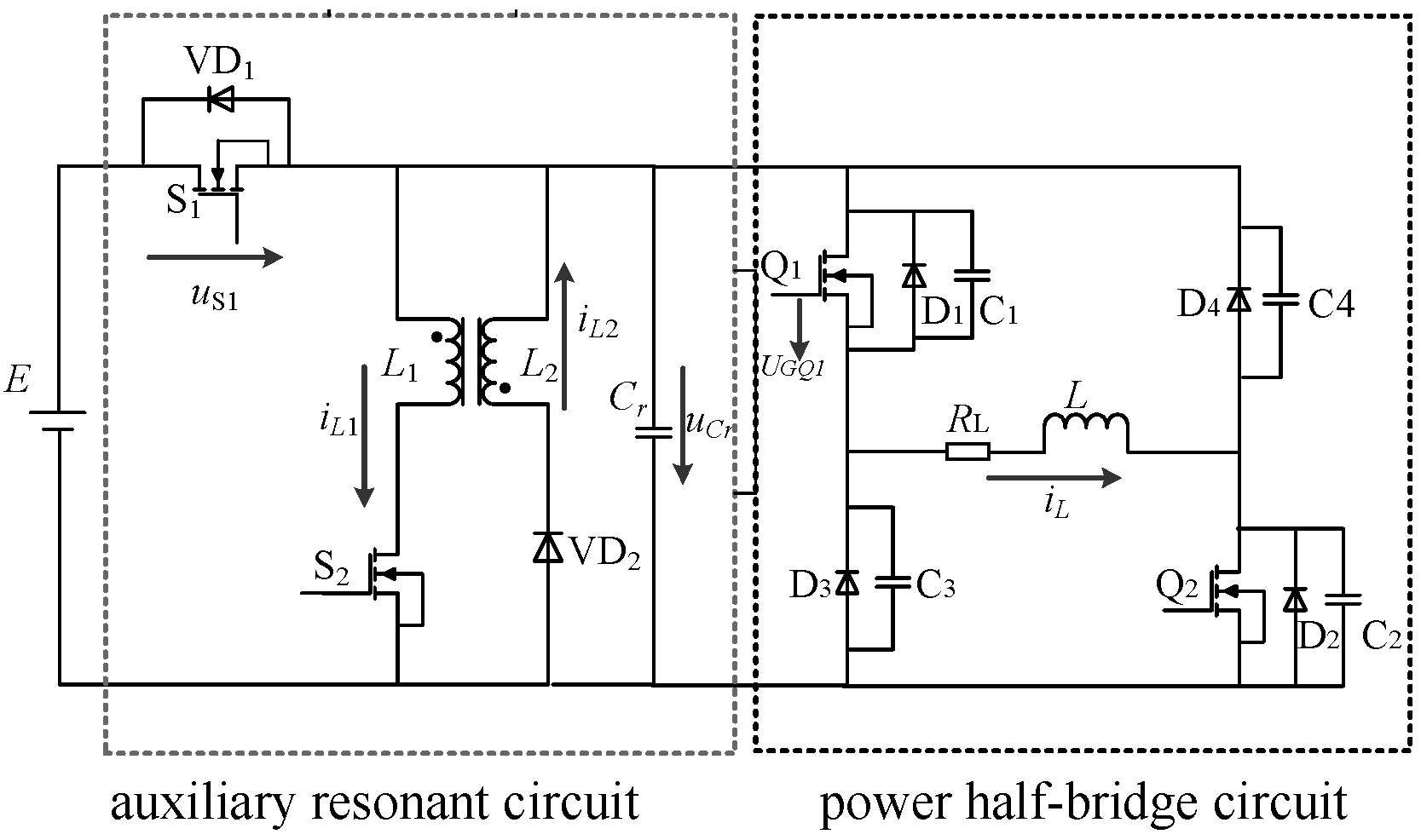
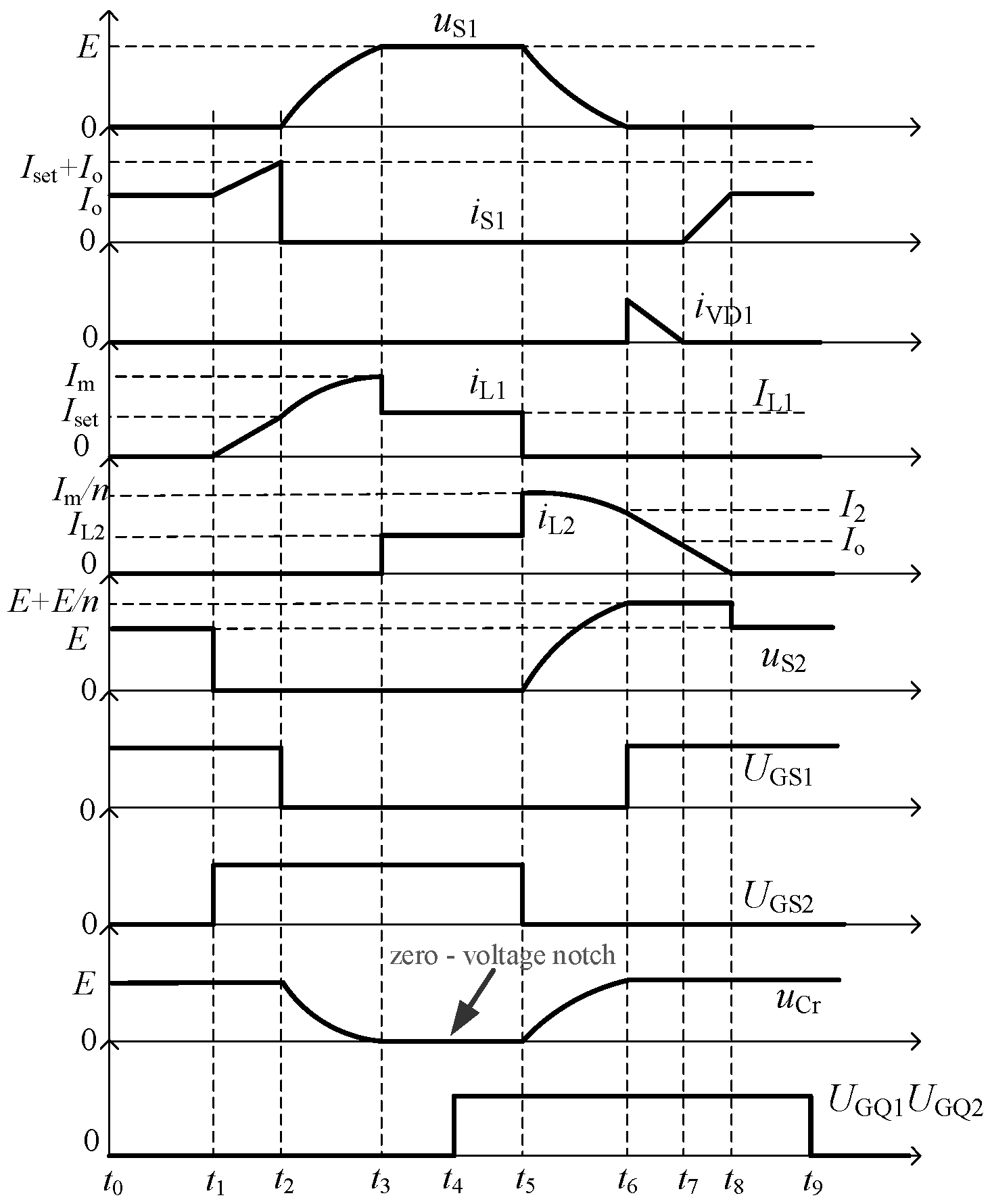


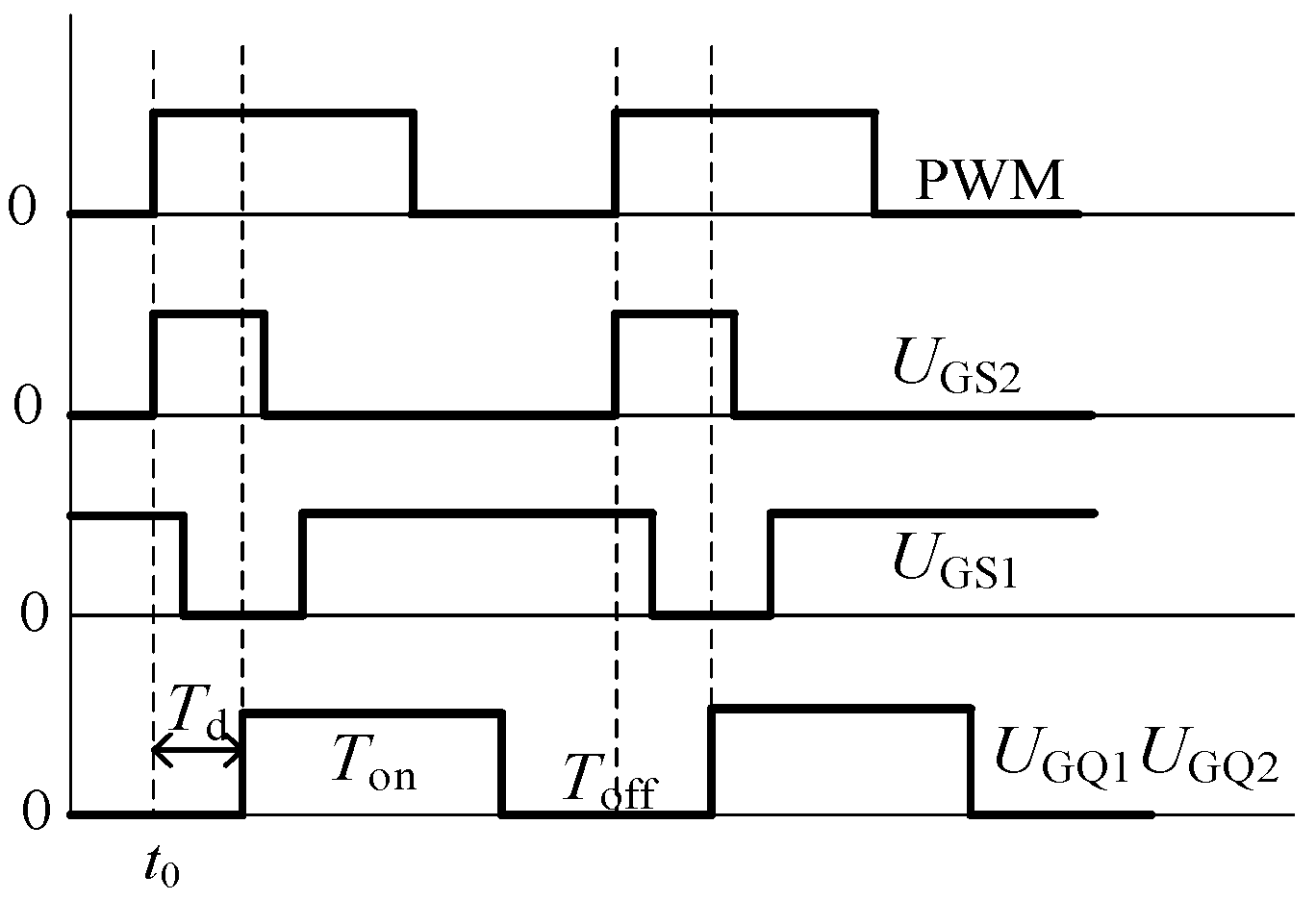

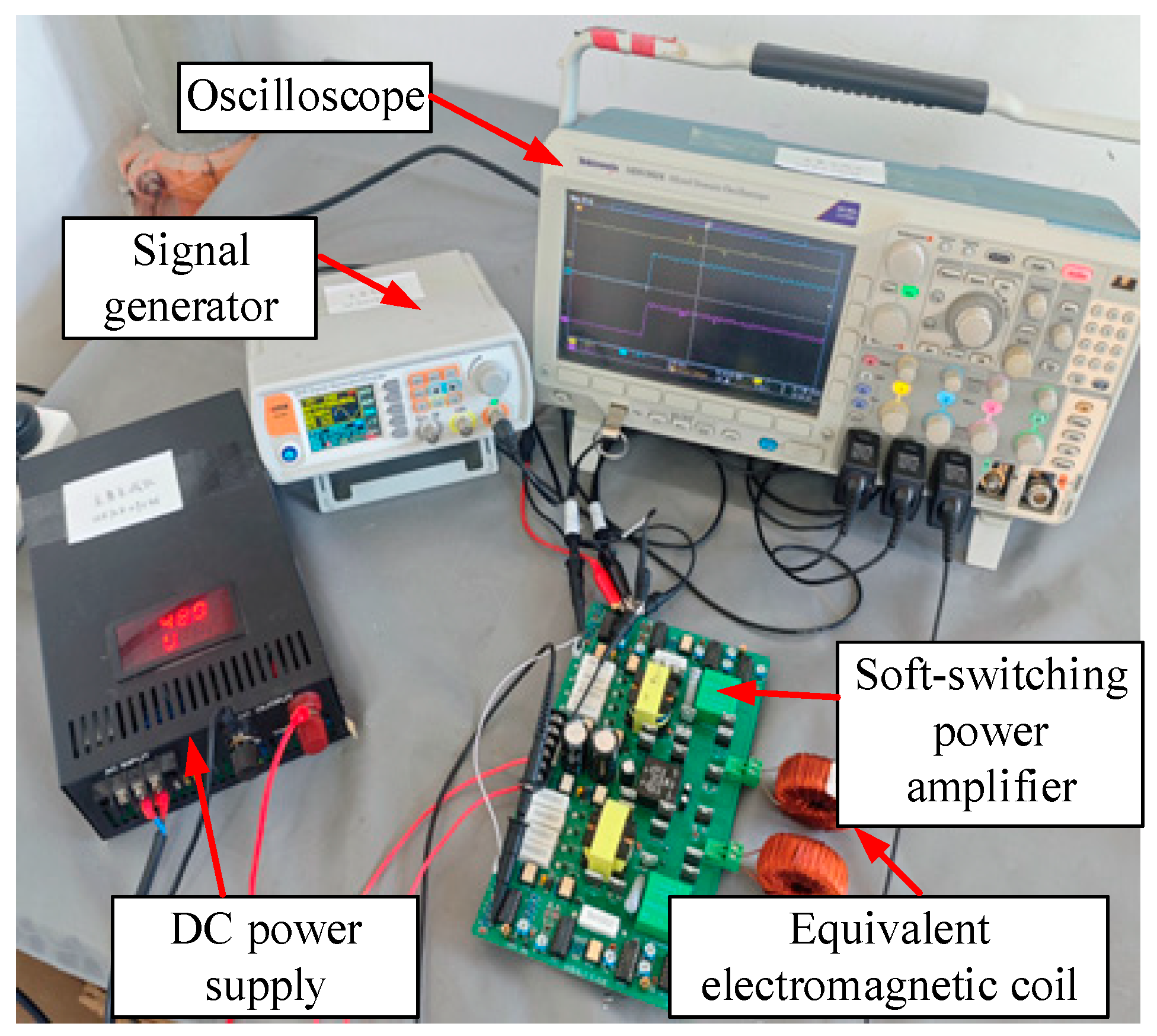
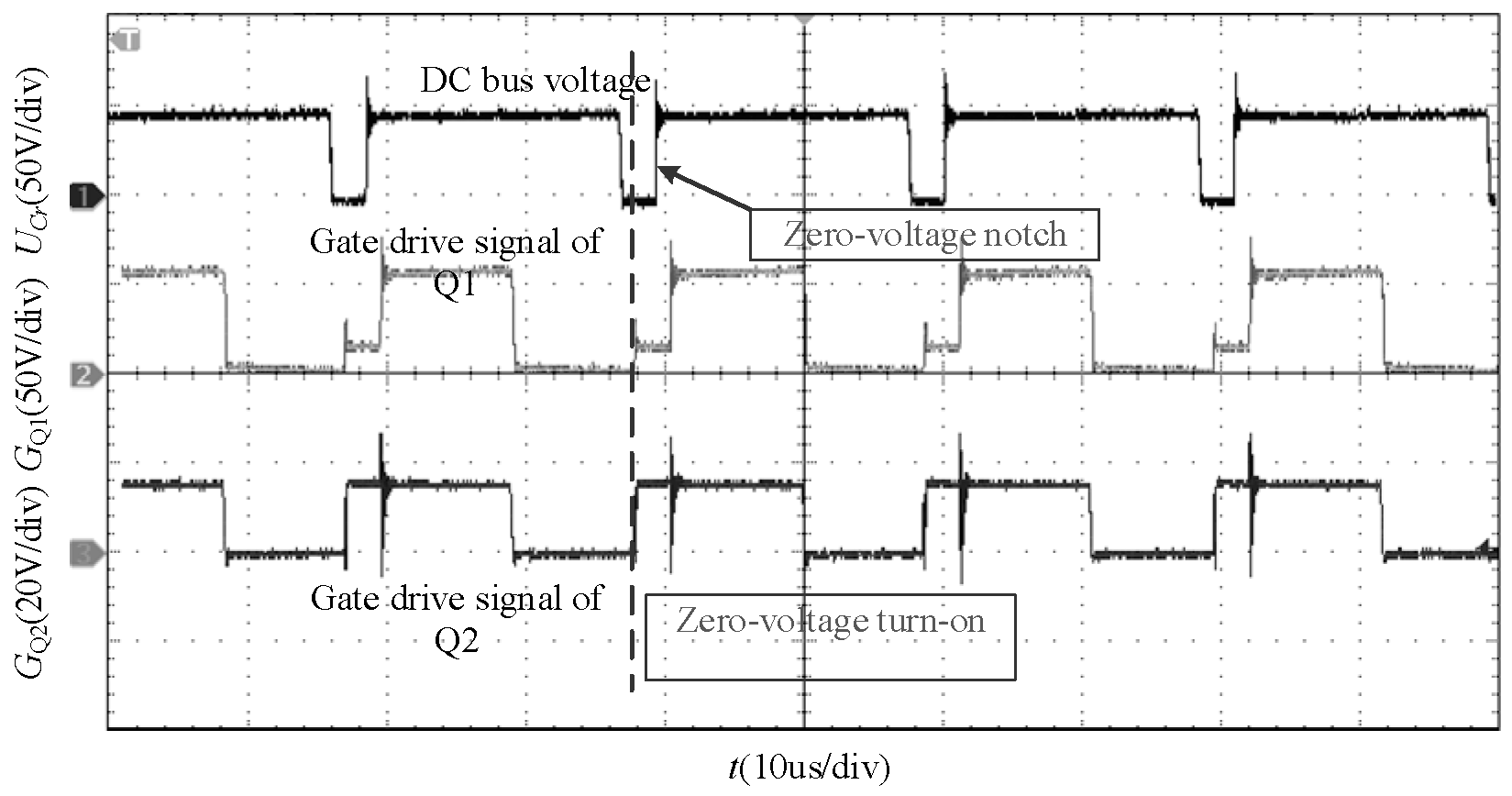
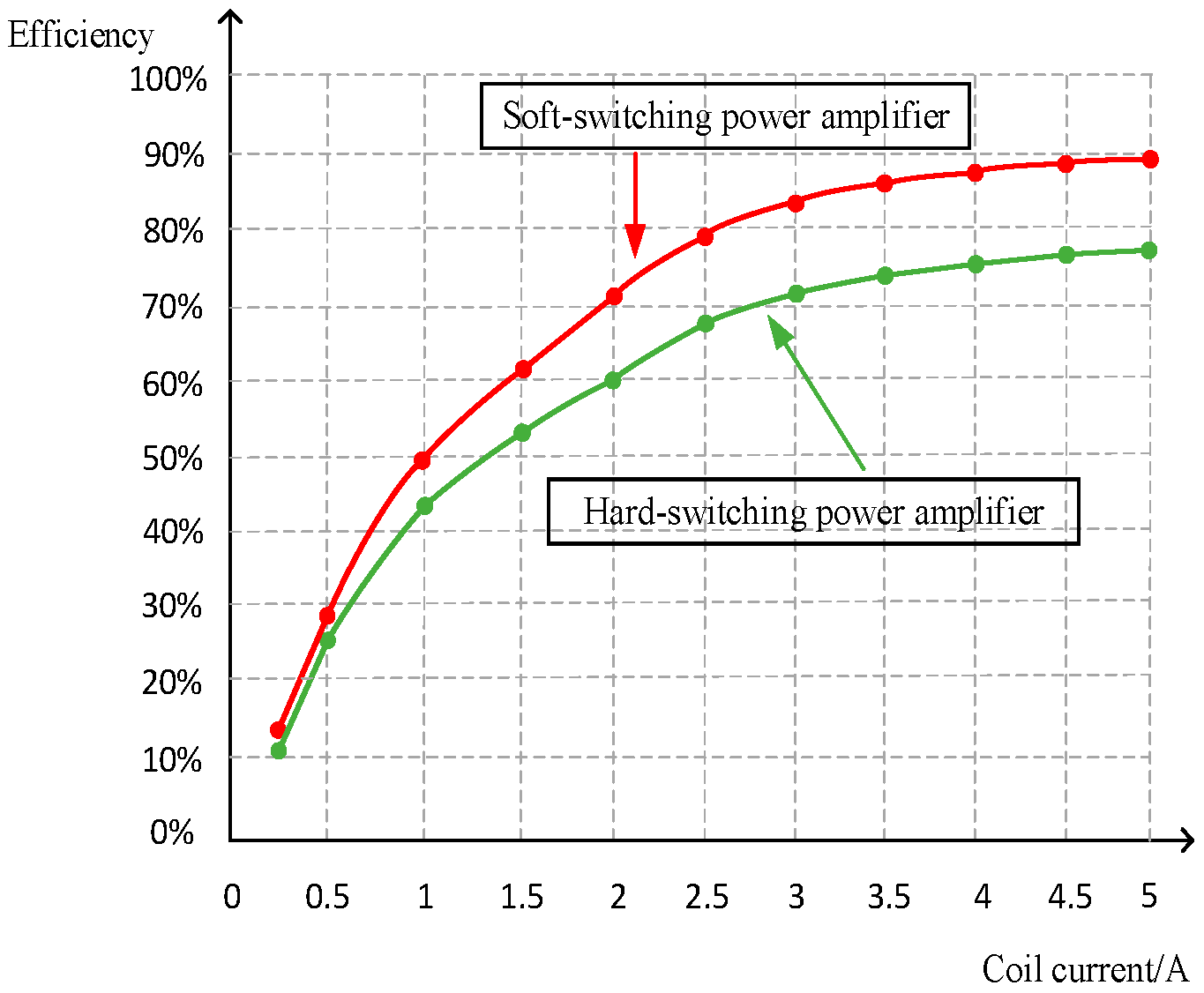
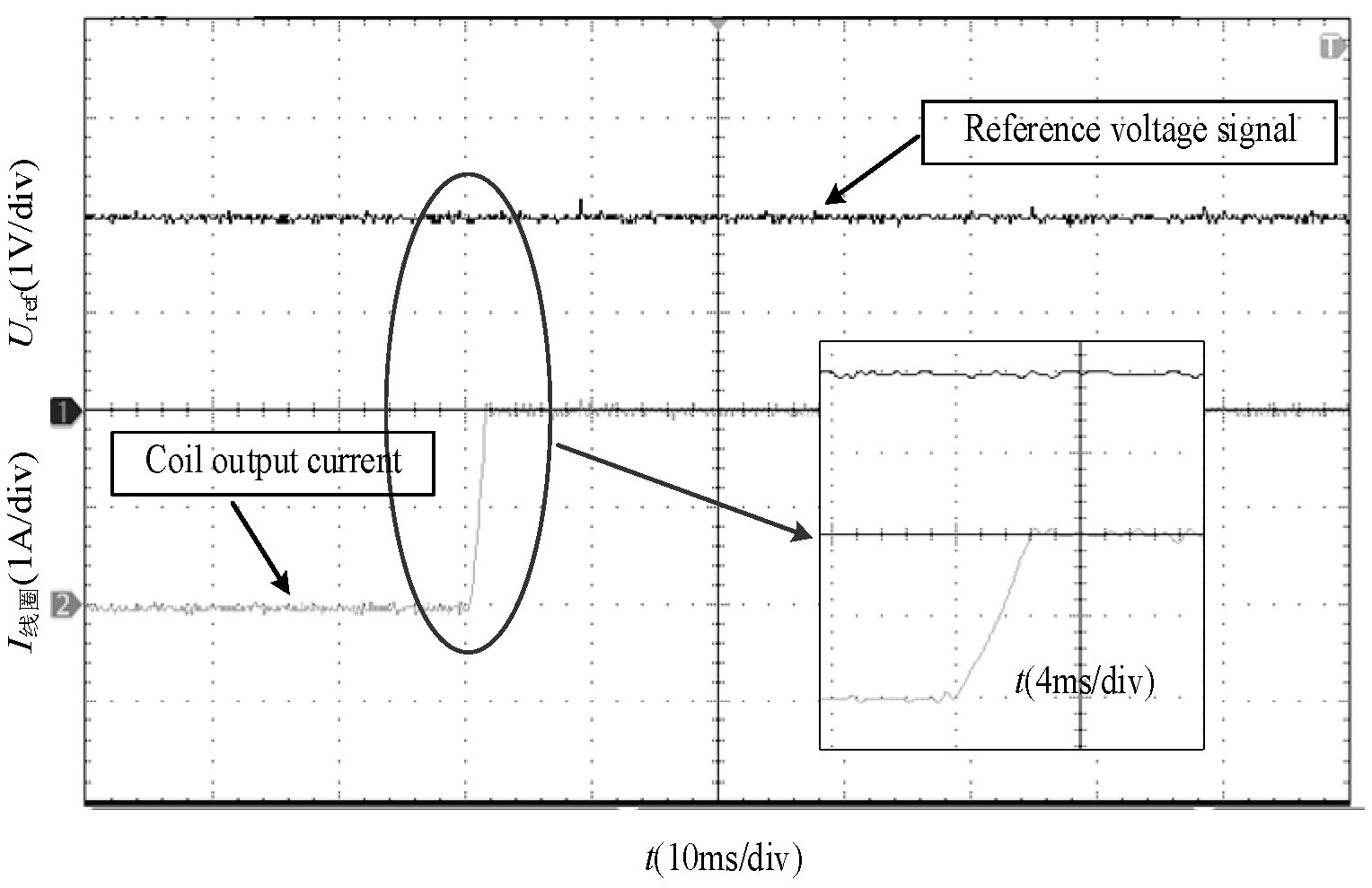


| Reference (Author, Year) | Topology/Control Strategy Type | Core Advantages | Key Limitations/Defects | Applicability Restrictions for AMBs | Most Salient Results |
|---|---|---|---|---|---|
| Li et al., 2022 [17] | Series Resonant Topology | Achieves zero-voltage switching (ZVS) via resonance between coil inductor and auxiliary capacitor. Reduces switching losses by 15%. | Resonant frequency depends on load current: frequency fluctuates by 20 kHz when AMB load current increases from 1 A to 5 A, requiring real-time adjustment of control parameters | Limited engineering applicability due to load-dependent resonant frequency | Switching losses reduced by 15%; resonant frequency fluctuation: 20 kHz (1 A–5 A load current) |
| Wang et al., 2023 [18] | Active-Clamped Soft-Switching Topology | Absorbs DC bus voltage spikes via a clamping capacitor. Realizes ZVS. | Auxiliary circuit requires 2 additional power transistors and 1 clamping capacitor. Increases circuit losses by 5% (caused by charging/discharging losses of the clamping capacitor) | Inapplicable to high-frequency (>50 kHz) switching scenarios of AMBs | Absorbs bus voltage spikes; auxiliary circuit increases losses by 5%; not suitable for operation above 50 kHz |
| Zhang et al., 2021 [19] | ZVS Control with Dead-Time Compensation | Addresses the coupling relationship between dead time and soft switching. Proposes a dead-time compensation algorithm. Verifies the necessity of zero-voltage duration covering dead time. | Does not provide a specific topology implementation (only focuses on control strategy) | Cannot be directly applied to hardware integration of AMB PAs due to lack of topology design | Validates that zero-voltage duration must cover dead time; no specific efficiency/power performance data |
| Chen et al., 2024 [20] | Model Predictive Control (MPC) for Soft-Switching | Improves the dynamic response of soft-switching PAs. | Excessive computational complexity, Requires FPGA hardware support, leading to increased costs | Not cost-effective for low-to-medium budget AMB systems; high hardware threshold limits popularization | Enhances dynamic response; requires FPGA for implementation; no quantifiable efficiency/bandwidth data |
| Kim et al., 2020 [21] | Compact Soft-Switching Topology (Resonant Circuit + Coil Inductance Integration) | Integrates resonant circuit with coil inductance, simplifying the overall structure of the PA. | Resonant characteristics rely on AMB coil inductance (coil inductance of AMBs may fluctuate with operating conditions, affecting resonant stability) | Resonant performance is susceptible to AMB coil inductance variations, reducing stability in variable-load AMB scenarios | Simplifies PA structure; resonant stability affected by coil inductance fluctuations; no specific efficiency improvement data |
| This Work | Parallel Resonant Soft-Switching Topology | 1. Compact auxiliary resonant circuit, easy to implement. 2. Zero-voltage notch duration is adjustable and independent of load current. 3. All switches achieve ZVS, significantly reducing switching losses. 4. Balances efficiency, dynamic performance, and operating bandwidth without performance trade-offs. | No significant limitations; auxiliary circuit introduces negligible additional losses, but requires precise timing control | No restrictions; suitable for AMBs with variable load current and high-frequency (50 kHz) switching requirements | 1. Efficiency: improved by 10% at 3 A output current; 2. Switching frequency: 50 kHz; 3. Dynamic response: settling time of ~2 ms; 4. Current ripple: ~100 mA; 5. Operating bandwidth: cutoff frequency of ~1300 Hz; 6. All switches achieve ZVS, eliminating voltage-current overlap during switching, improve system efficiency |
Disclaimer/Publisher’s Note: The statements, opinions and data contained in all publications are solely those of the individual author(s) and contributor(s) and not of MDPI and/or the editor(s). MDPI and/or the editor(s) disclaim responsibility for any injury to people or property resulting from any ideas, methods, instructions or products referred to in the content. |
© 2025 by the authors. Licensee MDPI, Basel, Switzerland. This article is an open access article distributed under the terms and conditions of the Creative Commons Attribution (CC BY) license (https://creativecommons.org/licenses/by/4.0/).
Share and Cite
Deng, H.; Zhou, M.; Huang, Z.; Chen, Q.; Xu, X.; Lai, P.; Chen, L. Research on Soft-Switching Power Amplifier for Electromagnetic Bearings. Electronics 2025, 14, 3858. https://doi.org/10.3390/electronics14193858
Deng H, Zhou M, Huang Z, Chen Q, Xu X, Lai P, Chen L. Research on Soft-Switching Power Amplifier for Electromagnetic Bearings. Electronics. 2025; 14(19):3858. https://doi.org/10.3390/electronics14193858
Chicago/Turabian StyleDeng, Hongfeng, Minzhu Zhou, Zhiyong Huang, Qiqing Chen, Xu Xu, Ping Lai, and Liangliang Chen. 2025. "Research on Soft-Switching Power Amplifier for Electromagnetic Bearings" Electronics 14, no. 19: 3858. https://doi.org/10.3390/electronics14193858
APA StyleDeng, H., Zhou, M., Huang, Z., Chen, Q., Xu, X., Lai, P., & Chen, L. (2025). Research on Soft-Switching Power Amplifier for Electromagnetic Bearings. Electronics, 14(19), 3858. https://doi.org/10.3390/electronics14193858





